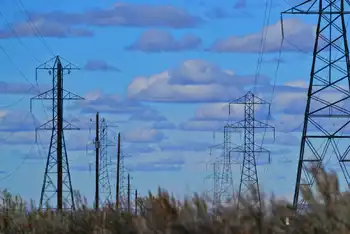TVA plans for Alabama drops to one reactor
By Fort Mill Times
NFPA 70b Training - Electrical Maintenance
Our customized live online or in‑person group training can be delivered to your staff at your location.

- Live Online
- 12 hours Instructor-led
- Group Training Available
The nation's largest public utility, which two years ago had positioned itself as a leader in this country's so-called "nuclear renaissance," said it would prepare a supplemental environmental impact statement to consider a single reactor for its unfinished Bellefonte site near Scottsboro, Ala.
That single unit might be one of the two advanced Westinghouse AP1000 reactors for which TVA has already applied to the Nuclear Regulatory Commission for a combined construction and operating license. Or it might be one of the two incomplete reactors that have been mothballed at the site since 1988.
A third option would be to not build anything, though TVA officials continue to see nuclear in the agency's future particularly because of tougher clean-air standards on power generators.
TVA still expects to need more baseload power by 2017-2020, TVA nuclear executive Ashok Bhatnagar said.
"Using nuclear generation to meet this need" will help TVA achieve at least 50 percent low or no-carbon-emitting generation by 2020, he said.
TVA directors are two to three years away from a final decision on what may actually be built at Bellefonte, TVA spokesman Terry Johnson said.
But the agency's policy shift comes a week after TVA reported a $339 million loss on $8.6 billion in revenues through the third quarter. That decline was largely due to a 7 percent drop in electric sales because of the economy and a growing estimate of up to $1.2 billion for the ongoing cleanup of a coal ash spill at Kingston, Tenn.
TVA, a self-supporting government enterprise, also is considering taking on these expensive building programs while it is operating within about $5 billion of its $30 billion debt ceiling set by Congress.
TVA estimated the cost of building two AP1000 reactors at $5.6 billion to $10.4 billion when the agency applied two years ago to the NRC for a novel fast-track construction and operating license for Bellefonte as part of the NuStart nuclear industry consortium. Each reactor would be capable of powering about 600,000 homes.
The application is still moving through the NRC review process, but NuStart dropped Bellefonte in May and switched focus to another proposed advanced reactor project in Georgia owned by Atlanta-based Southern Co.
By then, TVA had begun a $10 million study on whether to finish Bellefonte's existing, half-finished reactors — potentially resulting in a four-reactor plant. That study also is continuing, though now with the downsized goal of just one reactor.
NRC spokesman Roger Hannah said the agency takes "no role in deciding whether to complete the unfinished units at Bellefonte or begin construction of new units or some combination of those options." Any licensing decisions by the NRC will be based solely "on whether those units meet all applicable NRC regulations."
TVA had plans in the 1960s and 1970s for as many as 17 reactors, but scrapped most of them because of cost and lack of power demand.
Today, the agency operates six reactors at three sites and is spending $2.5 billion to complete a seventh reactor by 2012 that was similarly unfinished and mothballed for decades.
TVA broke ground on Bellefonte in 1974 and spent more than $4 billion there before deciding in 1988 that its power wasn't needed. At the time, one reactor was 90 percent complete and the other was 55 percent. They are estimated at less than that now because of age.
TVA supplies electricity to more than 60 major industrial customers directly and to 158 distributors serving nearly 9 million people in Tennessee and parts of Alabama, Mississippi, Kentucky, Georgia, North Carolina and Virginia.











